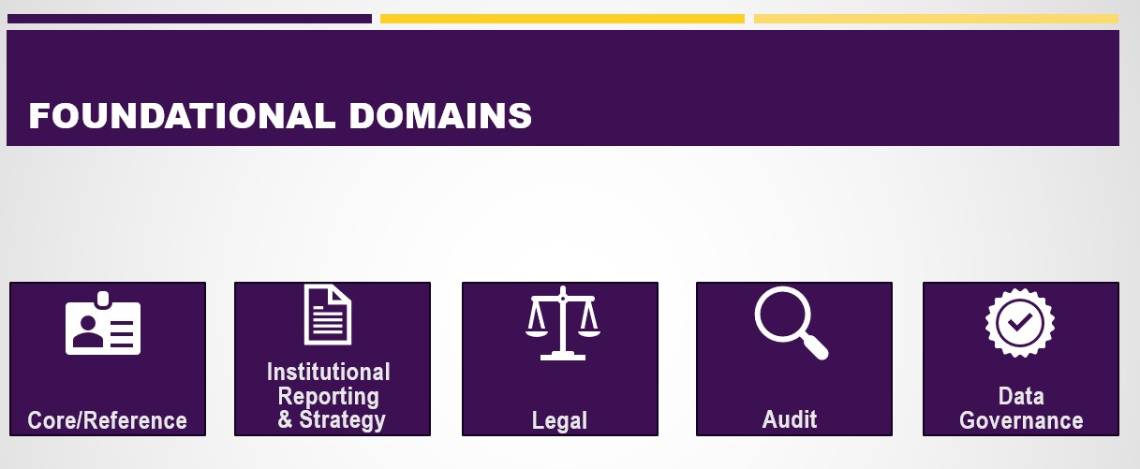LSU Data Domains
What is a Data Domain?
A data domain is a broad category of data relevant to the institution’s operations, encompassing various data sets that support a specific functional area. Data domains represent the high-level organization of data within the institution. Data domains are not organized based on systems (tools) or even institutional organizational structure, but rather a common concept or purpose.
A subdomain is a more specific category within a data domain, representing a narrower focus or a particular aspect of the broader data domain. Subdomains facilitate detailed categorization and management of data, typically aligning with specific functions or operational areas within a division. Data managers of these subdomains play a crucial role in the day-to-day operational management of data, ensuring that institutional policies are effectively applied at a granular level.
Functional domains are directly related to specific operational areas of the institution, such as Finance & Administration, Research, Student Engagement, and Human Resources. Each functional domain is responsible for managing data pertinent to its operational scope.

Foundational domains are cross-cutting domains that impact multiple functional areas and provide essential data and services that support the overall data strategy of the institution. Examples include Core/Reference Data, Institutional Reporting & Strategy, and Audit.

Understanding Domain Types in Data Governance
At LSU, data governance frameworks typically distinguish between two key types of domains: foundational and functional. Each plays a critical role in managing an institution's data assets, but they serve different purposes and have distinct characteristics. The following table outlines the key differences between foundational and functional domains across various parameters:
| Parameter | Foundational Domain | Functional Domain |
|---|---|---|
| Universality | Impacts multiple functional areas; used across the institution. | Specific to a particular operational area. |
| Foundational Nature | Essential for ensuring consistency and integration across systems. | Supports specific operational functions. |
| Consistency Requirements | Very high, ensuring uniformity and standardization across the institution. | Moderate to high, focused on operational consistency within the domain. |
| Governance Complexity | High, involving multiple stakeholders and requiring centralized management. | Moderate, typically managed within the specific functional area. |
| Strategic Importance | Critical for strategic planning, decision-making, and institutional governance. | Important for achieving specific operational goals and objectives. |
| Regulatory Overlay | High to moderate, often subject to institutional-wide compliance and legal standards. | Varies, depending on the specific operational area and external regulations. |
| Data Integration | Essential for integrating data across different functional systems and ensuring interoperability. | Focused on integrating data within the specific functional area. |
| Shared Resources | Utilizes shared resources and infrastructure; centrally managed. | Uses resources specific to the functional area; managed by the functional domain. |
Data Domain Architecture
LSU's data domain architecture demonstrates the interplay between foundational and functional domains. The foundational domains, represented by the steps at the base, provide the essential infrastructure and standardization needed across the institution. These include core functions like legal compliance, audit, and institutional reporting - perfectly aligned with their role in ensuring consistency and integration across systems.
Above these foundational layers, the functional domains (shown as interconnected operational areas) represent specific business units like Human Resources, Student Services, and Research. These areas, while operating independently within their pillars, are connected through the governance framework and rely on the foundational domains for support.



